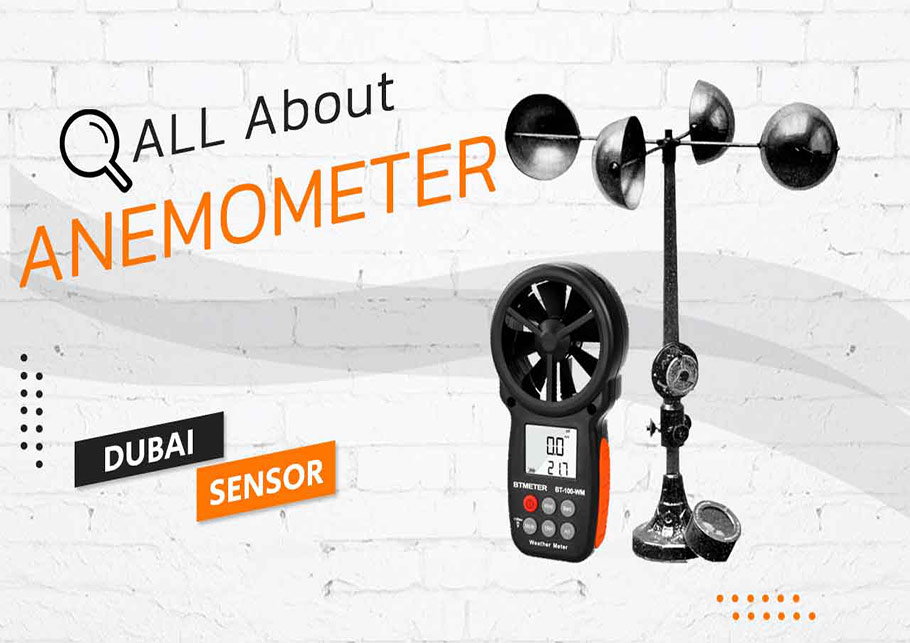Expert Tips for Calibrating Your Anemometer for Optimum Performance
Expert Tips for Calibrating Your Anemometer for Optimum Performance
Blog Article
Anemometers Unveiled: Recognizing Their Relevance in Ecological Surveillance and Precaution
The function of anemometers in ecological monitoring and security procedures is usually undervalued, yet their importance is indisputable. From weather forecasting to aeronautics security, anemometers play a critical duty in offering exact information that informs decision-making processes and improves general safety and security.
Background of Anemometers
The advancement of anemometers can be mapped back to the old worlds where fundamental wind gauging tools were very first used. These early wind measurement devices laid the foundation for the development of more innovative anemometers with time. One of the earliest well-known anemometers was the hemispherical cup anemometer developed by Leon Battista Alberti in the 15th century. This layout consisted of four hemispherical mugs that accumulated wind power, offering a measurement of its strength based upon the speed of turning.
In the 18th century, the prominent scientist John Thomas Romney Robinson presented the Robinson anemometer, which included 4 hemispherical mugs mounted on horizontal arms that expanded from a main axis. This layout ended up being a standard in meteorological measurements due to its precision and integrity. Throughout the years, advancements in technology brought about the advancement of even more modern anemometers, including ultrasonic anemometers and laser Doppler anemometers, using raised precision and performance in gauging wind speed and instructions. The background of anemometers showcases an exceptional journey of innovation and development in the field of meteorology.
Kinds of Anemometers
Throughout the area of meteorology, various types of anemometers have actually been developed to precisely measure wind speed and direction. Sonic anemometers make use of ultrasonic signals to determine wind speed and instructions accurately. Hot-wire anemometers run based on the concept that the cooling impact of wind on a heated cord is symmetrical to the wind speed.
Applications in Weather Forecasting
Having actually reviewed the different sorts of anemometers utilized in meteorology for determining wind rate and instructions, it is vital to discover their useful applications in the area. Anemometers play a crucial function in meteorology by providing real-time and accurate data on wind conditions (anemometer). Meteorologists use anemometers to keep track of wind speed and instructions to forecast weather condition patterns, issue warnings for serious weather condition events like twisters, storms, and typhoons, and evaluate climatic problems for air travel security
In weather forecasting, anemometers help in understanding regional and local wind patterns, which are important for predicting weather adjustments and figuring out climatic trends. These devices are likewise utilized in research study to study microclimates, city heat islands, and air pollution dispersion. Additionally, anemometers are used in agriculture to enhance plant administration techniques, such as watering and pesticide application, based upon wind problems.
Value in Aeronautics Safety And Security
An integral element of making sure air travel security depends on the meticulous monitoring of wind conditions making use of recommended you read anemometers. Anemometers play a vital role in aeronautics by giving real-time information on wind rate and instructions, helping pilots in making informed choices during take-off, touchdown, and trip. Unpredictable and solid winds can substantially affect airplane operations, making it vital for air travel authorities to count on precise wind dimensions to ensure the security of passengers and staff.

In the vibrant atmosphere of air travel, where even small changes in wind rate and direction can have extensive effects, anemometers stand as indispensable devices for advertising protected and safe flight.
Function in Environmental Research
Anemometers play a critical function in environmental study by supplying crucial information on wind rate and instructions. By properly gauging wind characteristics, anemometers help researchers analyze the movement of toxins in the air, analyze the influence of commercial exhausts, and anticipate the spread of pollutants in the environment.


Final Thought
In final thought, anemometers have actually played a crucial duty in environmental tracking and security measures. Recognizing the importance of anemometers is essential for precisely gauging wind rate and my website direction, which is vital for anticipating weather patterns, making certain safe air travel procedures, and carrying out ecological research studies.
One of the earliest recognized anemometers was the hemispherical cup anemometer designed by Leon Battista Alberti in the 15th century. Over the years, innovations in technology led to the growth of more contemporary anemometers, consisting of ultrasonic anemometers and laser Doppler anemometers, using increased precision and performance in gauging wind rate and direction. Hot-wire anemometers operate based on the concept that the cooling effect of wind on a warmed cord is proportional to the wind speed. Meteorologists make use of anemometers to keep track of wind rate and direction to forecast weather condition patterns, problem cautions for serious weather condition events like cyclones, hurricanes, and storms, and analyze climatic click to investigate conditions for aeronautics safety.
Recognizing the significance of anemometers is important for precisely gauging wind rate and instructions, which is important for anticipating climate patterns, ensuring safe aviation operations, and conducting ecological studies. (anemometer)
Report this page